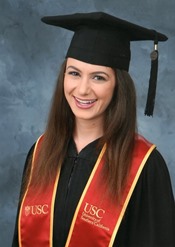Program Information
Quantitative Radiomic Texture Analysis: Robustness Across Two Mammography Manufacturers
K Mendel*, H Li , L Lan , M Giger , Univ Chicago, Chicago, IL
Presentations
WE-G-601-4 (Wednesday, August 2, 2017) 4:30 PM - 6:00 PM Room: 601
Purpose: This study investigates the robustness and repeatability of texture radiomics across different manufacturers of mammography imaging systems.
Methods: Study involved a population of 111 women who underwent consecutive screening mammography on GE and Hologic systems. In each processed mammogram, a 256x256 square region of interest (ROI) directly behind the nipple was manually delineated. Texture-based radiomic features were calculated on each ROI using our lab-developed, fully-automated workstation. To access the repeatability, sub-ROIs of size 128x128 pixels were selected from the upper left corner, center, and lower right corner of each original 256x256 ROI. Feature comparisons were conducted between manufacturers and between ROI locations using metrics descriptive of correlation, equivalence, and variability. For each feature, correlation across manufacturers was given by the Spearman correlation coefficient, equivalence by the mean of the ratios from of that feature extracted from a GE image to that of a Hologic image, and variability by the standard deviation of such ratios over cases.
Results: Correlation of the various texture features ranged from 0.13 to 0.68 for those achieving statistical significance. By examining the range of correlation, equivalence and variability measures, we propose the following “robustness” selection criteria: (1) 0.8< mean of feature ratios <1.2, (2) standard deviation <0.3, (3) r>0.5, and (4) p<0.05. Features meeting these criteria included box-counting fractal dimension features, Minkowski fractal-dimension features, power law features, and gray level co-occurrence matrix features. Features describing spatial patterns tended to exhibit high correlation coefficients, while intensity-based features had a wide range of performance, and directionality-based features had comparatively poor correlation.
Conclusion: Results suggest that texture phenotypes quantifying spatial patterns tend to be more robust across manufacturers than pixel intensity or texture directionality phenotypes. Future work will investigate the predictive value of the robust features in assessing the risk of breast cancer.
Funding Support, Disclosures, and Conflict of Interest: Supported, in part, by the NIBIB of the NIH under grant number T32 EB002103. M.L.G. is a stockholder in R2 Technology/Hologic, co-founder and shareholder in Quantitative Insights and M.L.G. and H.L receive royalties from Hologic, GE Medical Systems, MEDIAN Technologies, Riverain Medical, Mitsubishi and Toshiba.
Contact Email:
